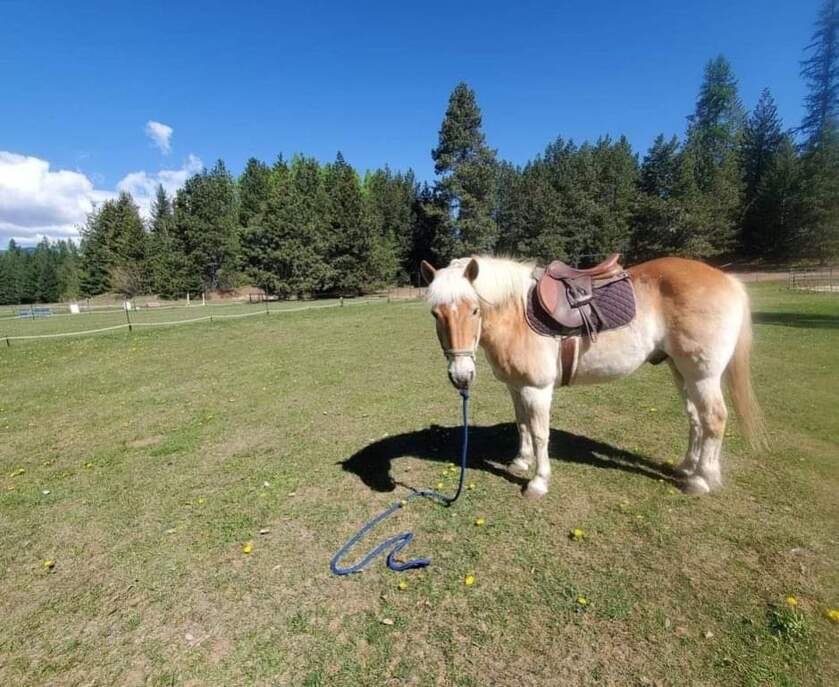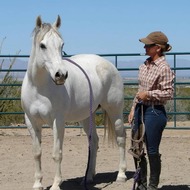
I am not an equal nutritionist, nor a vet, but this is a generalized list of things I've learned to see based on the last three decades of working with many unhealthy horses.
I start with an overall zoomed-out perspective. Watching the horse and how they stand when in a calm mental and emotional state can give us a lot of insight as to what they are physically feeling. If they are consistent in postures such as specific odd/compensating leg positions that they seem to repeat when in a standing position, it often reflects pain issues.
Noticing a "pointing" with a front hoof (trying to alleviate pain) can reflect the consequences of an inappropriate diet and a variety of lameness or diseases.
Feeling each hoof for heat can reflect inflammation.
When I look at the horse overall I'm noticing things like the length/texture/curl of their coat relative to the season, their age, and breed. I'm looking at the shine, which is not reflected based on how clean the horse is, but if the horse is producing healthy oils.
I'm looking at their feet, healthy growth, rings, or other visual damage on the outside are obvious markers for changes in feed and diet.
I'm looking at their overall awareness of the world around them as far as how sensitive they are or perhaps shut down. Many quiet horses behave in a seemingly compliant manner because they are often in a painful state.
I'm watching for tail movement and position in response to their environment or activities occurring around them; too many people ignore how much the tail can tell us. Short, fast, dramatic swishing and response to being physically touched can be a very strong paint indicator of gut issues.
I like to start at one end of the horse and work my way along their bodies so that nothing is missed.
I'm noticing their breathing, many horses have developed allergies to environmental factors and you will hear literal breathing issues when they are at rest. I will also do a stress test restricting their air, dramatic dry coughing, discharge of phlegm or partially chewed feed can indicate problems.
Running my hands along the outside of their jaw where the upper and lower teeth meet can often trigger a dramatic response in the horse if there are dental issues which then are affecting how they are chewing and processing feed and perhaps depriving them of nutrients despite them being fed quality feed.
Opening their jaw and smelling their breath. So many horses have rancid-smelling breath reflecting an imbalance in gut acids. Many older horses I meet have dental issues so their diet consists of processed feeds and senior grains; I find all too often the stench of their breath reflects fermenting food in their gut from the high sugar content.
I'm watching for when and if they pass manure, and the position in which they hold their body as they do so. Inspecting the texture of the manure, inspecting for sand, etc. can tell us a lot about their gut health.
If you have the opportunity to watch the horse drink if there is a dramatic gulping and very large quantities of water consumed can often indicate kidney issues.
Being able to watch the horse eat both any supplements and grain, noticing if there are dramatic or odd chewing behaviors, and watching for feed falling out of his mouth, can indicate an inability to break down and process food, which can lead to things like choke and nutritional deficiencies.
I'm looking at the horse's eye; if fatty tissue or a puffiness below the lower lid is present that can indicate IR and gut issues. The color of the inner lid can indicate blood health issues.
Looking at the neck along the side of the mane might have fat pockets when there are digestive issues, sugar sensitivities, et cetera. The more obvious "floppy" or cresty mane that is flipped over is a pretty severe case leading to many potential unwanted health issues such as laminitis.
I also tend to see fat pockets in front of the scapula when horses are not digesting their food well.
An enlarged barrel is common when horses are carrying worms or other parasites. So many folks believe their horse is plenty fat, without realizing it's actually a health issue.
Noticing if there is a "ridge" where it seems the spine is protruding upward, usually about 6- 8" in length, behind the rear of the saddle, can indicate nutritional deficiencies and red blood cell issues.
Along the rump but especially down the back of the hamstring are common locations of fat pockets in horses, especially ones that are older and have had years of imbalanced health.
I'm sure there's more I haven't thought about at the moment but these are the basics that I look at. I hope this list helps you to be able to better assess your horse.
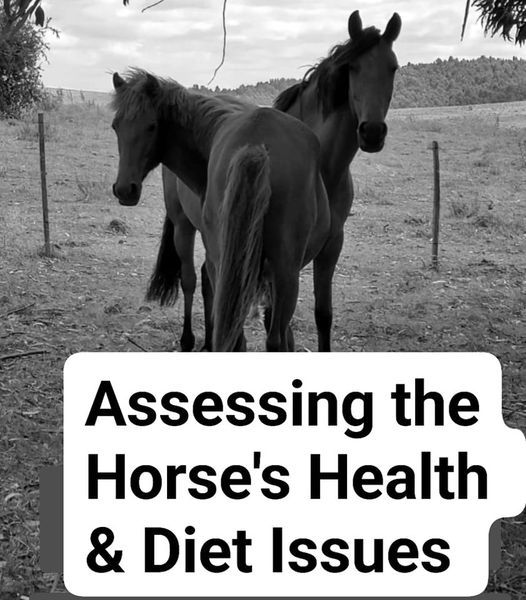
Equine Emergencies & Horse Evacuations
Please comment, like & share
Emergency Evacuation YouTube Video 1
https://youtu.be/52RflMZoP4w
Emergency Evacuation YouTube Video 2
https://youtu.be/jRCmOTq9mto
Horse Rider Communication
Common missing pieces
#alternativehorsemanship #RemoteHorseCoach #horses #horseriding #horserider #horsebackriding
As with everything, there are many interpretations when it comes to the terminology associated with horses. I try to be clear and precise in the words that I'm offering, but there still can be a gray area in the human student's understanding. This often comes from their level of awareness, background, and unintentional anticipation/expectation of their mind "getting ahead" of wherever they are currently at with their horse.
I thought I'd share my perspective on a release with a horse. Here are a few of my thoughts:
What one horse experiences as a release, could be pressure or stress-inducing to another.
Often what humans assume is a release of pressure (whether physical or spatial) is not perceived by the horse in the same way and defeats the purpose.
The release is not about "asking nothing," but is a time for the horse to mentally process and emotionally purge any potentially defensive emotions. But if he is "left" standing with tension, and concern, or is distracted while offered a release, it will be ...
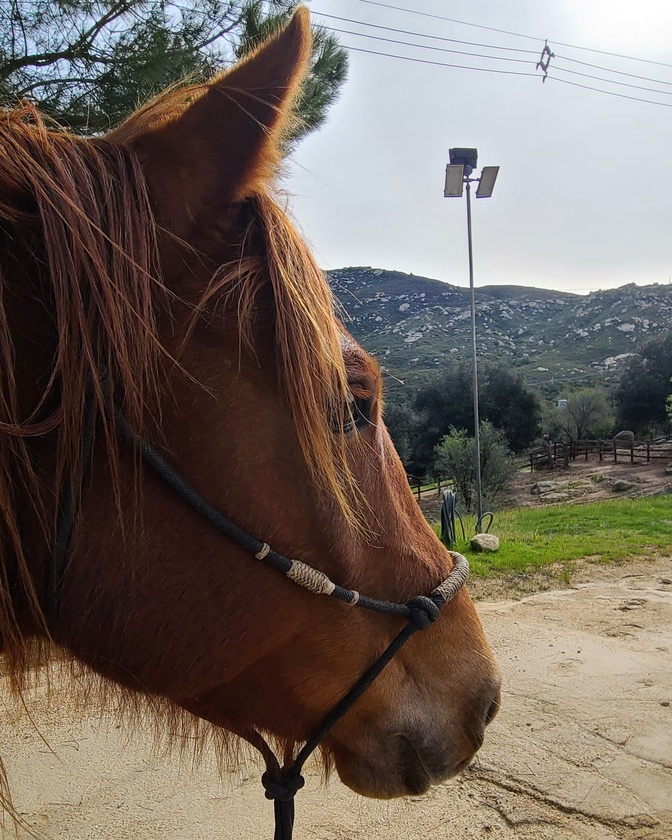
Addressing engaging the horse's mind to create mentally directable equines.
Livestreams April 13th and 27th 5pm pst.
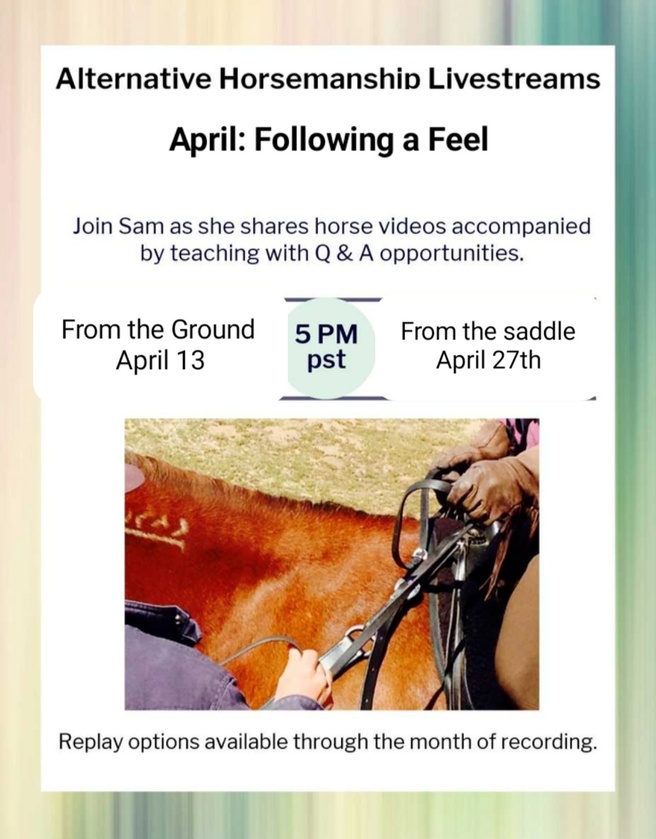
Unfortunately, most horses I meet have pain issues that humans have mistook as behavioral problems. The healthier and more comfortable we can keep our horses, the more available they are to interact with us in a willing and reasonable manner.
Below are some basic questions to ask in regards to your horse’s health.
I suggest keeping a horse health journal making note of diet changes, farrier care, odd behaviors, etc. It can be used as a future reference point to learn from and find what works best for the horse.
Taking pictures from both profiles, front, and rear every six months can also be a good reference.
For those who experience dramatic seasons and environmental changes and for those who have had the same horse(s) for a long time, patterns often occur out of convenience in the horse’s maintenance program.
As the horse gets older possible adjustments may need to be made to the program.
What is the general condition of your horse's mane and coat?
Weight-wise does your horse look consistent or does he look like he ...
